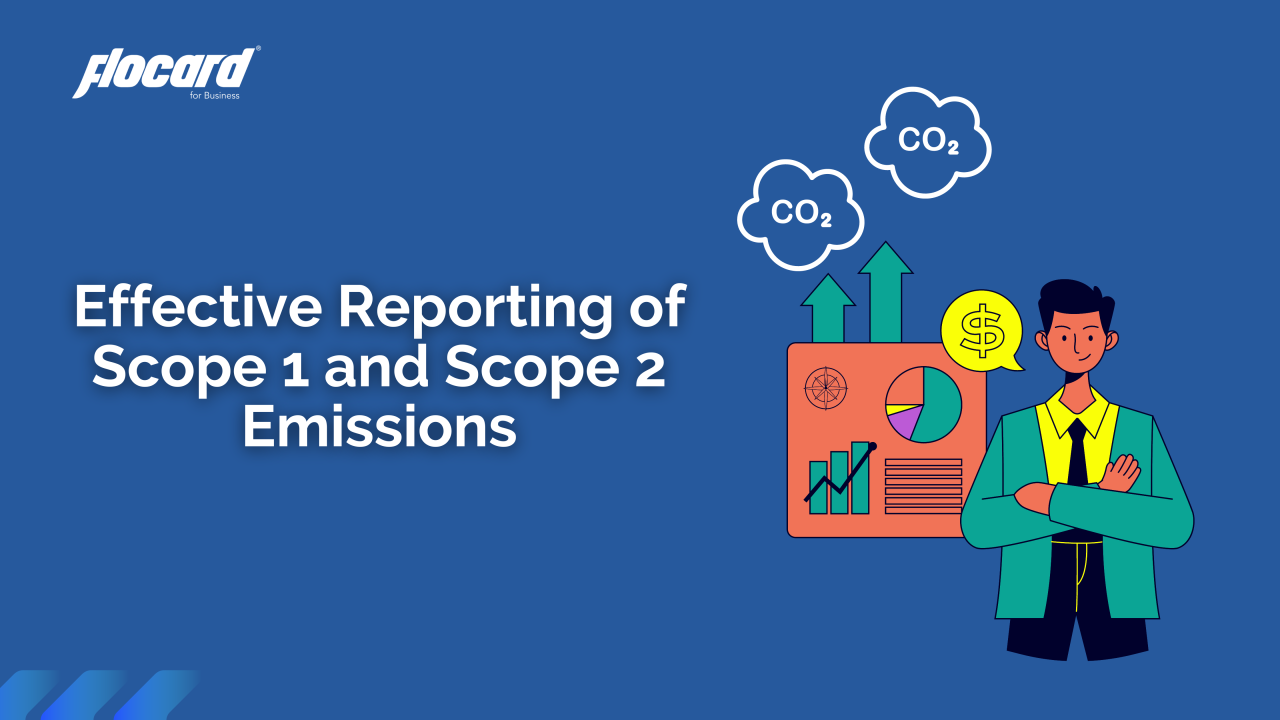Decoding Scope 1 & 2 Emissions Reporting: A Blueprint for Sustainable Success

Effective Reporting of Scope 1 and Scope 2 Emissions
Introduction
Scope 1 and scope 2 emissions are the greenhouse gas emissions from organizations through direct sources from combustion, processing, fugitive or transport processes or purchase of electricity from their parties. It is a compliance guideline to report scope 1 and scope 2 emissions by organizations to report their carbon emissions from their processes. It is a necessity and a dedicated effort to comply with national and international efforts towards sustainability. Effective reporting ensures calculation from respective sources and their values reported as carbon dioxide equivalents.
Key differences between Scope 1 and Scope 2 emissions
It is necessary to understand greenhouse gases (GHG) in the form of “scopes” as mentioned by the GHG Protocol to ensure correct reporting of emissions. A thorough knowledge of Scope 1 and 2 promotes the identification of potential sources and data collection enabling correct reporting. Scope 1 emissions are direct emissions owned or controlled by a company/organization. These emissions result from processes like combustion, processes, manufacturing, transport and fugitive sources.
Scope 2 emissions are the indirect emissions resulting from the purchase of electricity through third parties or from the grid. Even though the sources of GHG emissions differ they pose a danger to an organization's carbon footprint, brand image and dedication to sustainability.
Benefits of Effective Reporting
Effective reporting of these scopes offers a myriad of benefits. Correct reporting by the companies ensures that there is improved transparency between various stakeholders of the companies as well as the customers. This entails trust building between the company's brand and its customers. This happens because of sheer commitment by the companies to take a step towards sustainability. This brings brand and reputational enhancement.
Effective reporting ensures the identification of emissions hotspots and responsible key value chain players contributing to these emissions. A better understanding of these hotspots and weaknesses enables the top management to relook at the resources, energy and climate-related risks.
A thorough investigation enables to mitigate and fix the issue thus making initiatives to utilise eco-friendly or renewable energy sources to reduce carbon footprint. This brings a low cost to energy and resource usage. A positive engagement about effective reporting among employees and consumers promotes compliance with regulatory GHG reporting requirements.
Components of Effective Reporting
Effective reporting is crucial for accounting for Scope 1 and 2 emissions. There are important components necessary for effective reporting of GHG emissions. The important components of reporting are:
-
Data collection and measurement
Ensure to gather correct data for Scope 1 emissions through direct consumption of fuel usage data or utility bills or consumed electricity for Scope 2 calculations. One cannot initiate efforts to curb GHG emissions from inventory sources unless one correctly measures the emission data. Thus correct data collection and measurement is an important component to effective reporting.
-
Setting Clear Reporting Boundaries
Make sure to make a clear understanding of organisational boundaries for emission reporting. Before carrying out any measurement, ensure to define your organizational boundaries and set outlines to include either operations or activities for the correct scoping of emission data. One should also delineate Scope 1 and Scope 2 emissions for transparency in reporting.
-
Maintaining Accuracy and Consistency
Organizations carrying GHG accounting should make a note to implement quality procedures to verify the accuracy of emission data. A widely spread quality standard adopted by GHG protocol or national standard or the one used by the companies is necessary to maintain a pattern in reporting format.
-
Stakeholder Engagement and Communication
It is beneficial to involve a diverse range of stakeholders such as employees, investors, customers, and communities in an inclusive reporting process. Transparent and effective communication among stakeholders is essential. This can be achieved through comprehensive dissemination of information via sustainability reports, websites, communication materials, newsletters, or conferences.
Best Practices for Reporting
-
A. Setting emission reduction targets
Emission reduction targets by an organization are the best way to focus on sustainability and climate change. Emission targets are clear, measurable goals that help the company to align with the company’s sustainability goal and carbon accounting process.
The step of setting targets begins with a baseline year and then setting a trajectory to reach the goal year by year. This is only achievable if correct carbon accounting and carbon metrics are measured and calculated in terms of carbon equivalents.
-
B. Using standardized reporting frameworks
A standardized reporting framework is a set of rules and guidelines that enable organizations to collect, analyse and calculate the data based on data collected. For effective reporting, it is crucial to first select the reporting framework. A standard reporting framework ensures that the same metrics and parameters are analysed evaluated and broadcasted to the general public. These frameworks also help organizations to identify their problem areas and initiate processes to improve their sustainability. A standardized reporting framework may be GHG Protocol, BRSR or framework adopted by the company for GHG calculation. The advantage of using them is that they provide enhanced transparency, enhanced accountability, and promote better risk management by identifying the emissions hotspots and addressing them.
Conclusion
Scope 1 and Scope 2 emissions represent the greenhouse gases emitted by organizations, stemming from activities like combustion, processing, or transportation, as well as electricity purchases. It's like a rulebook that says companies must report these emissions, showing how much carbon they're releasing into the environment. This isn't just a box to tick; it's a crucial part of global efforts to be more sustainable. When companies report effectively, they're basically showing where their emissions come from and how much of a carbon footprint they're leaving behind. It's like shining a light on areas where they can make changes to be greener.
Join FloCard 's mission of creating a #BetterPlanetTogether by achieving emission reduction targets and promoting efforts for a greener planet.
